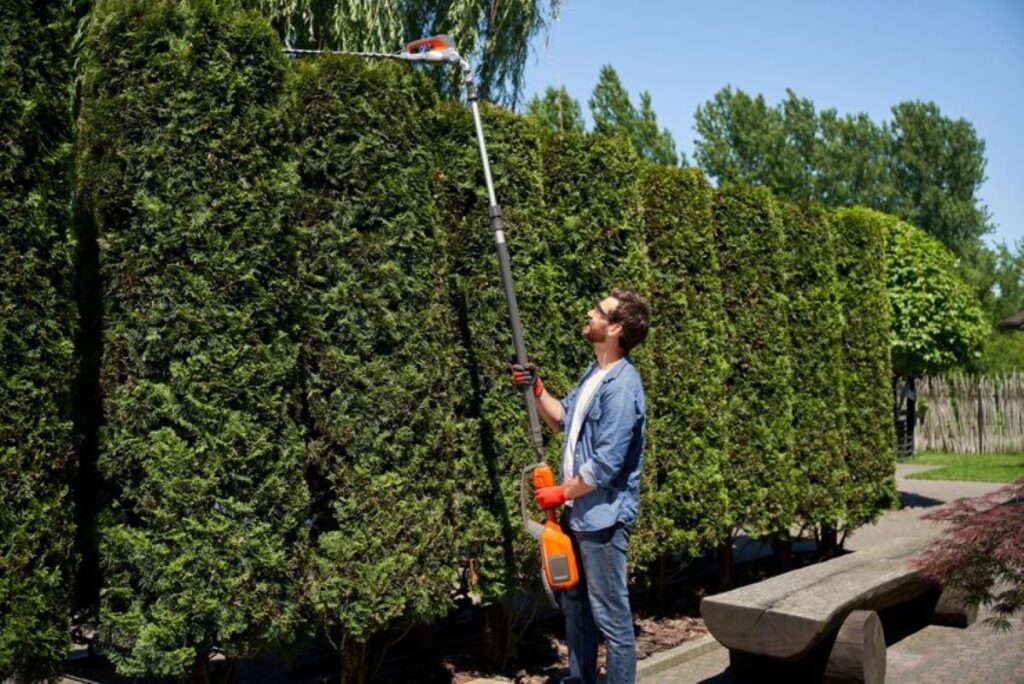Hedge trimming is more than just a chore in garden maintenance; it plays a crucial role in the health, appearance, and sustainability of your garden. Regular hedging practices can significantly enhance the aesthetics of your outdoor space while promoting the overall vitality of your plants. This article delves into the importance of regular hedge trimming, the tools you need, techniques for effective cutting, and the environmental impacts of maintaining hedges.
Understanding the Importance of Regular Hedge Trimming
One cannot underestimate the value of regular hedge cutting in maintaining a vibrant and healthy garden. Trimming hedges regularly not only keeps them looking neat and tidy but also encourages healthy growth. When performed correctly, hedge cutting can result in strong, vigorous plants that will flourish in their environments.
The Science Behind Hedge Growth
Hedges are made up of numerous branches that require space and nutrients to grow optimally. By trimming hedges, you promote an even distribution of light and air circulation throughout the plant. This is vital for their health, as it prevents the inner branches from becoming woody and dying off. Proper trimming enables a hedge to produce new growth more efficiently, ensuring a fuller and denser appearance. Additionally, the timing of the trimming plays a crucial role; for instance, cutting during the dormant season can help protect the plants from stress while encouraging robust growth in the spring.
The Aesthetic Advantages of Well-Trimmed Hedges
A well-maintained hedge can serve as a stunning focal point in any garden. Trimming helps shape the hedges, allowing you to create intricate designs and borders that enhance the overall visual appeal of your space. Neatly cut hedges set a professional tone for the landscaping, reflecting a high level of care for the garden. Furthermore, the aesthetic benefits extend beyond mere appearance; strategically placed hedges can also serve functional purposes, such as providing privacy, acting as windbreaks, or even reducing noise pollution from nearby streets.
How Regular Trimming Contributes to Hedge Health
Regular trimming counters several common issues faced by hedges, such as pest infestations and diseases. By keeping the structure open and allowing sunlight to penetrate, trimmed hedges are less likely to become a breeding ground for pests. Moreover, removing dead or diseased branches can also promote new growth and ensure the longevity of the plant. This proactive approach to hedge maintenance not only preserves the plant’s health but can also save time and resources in the long run, as addressing issues early on prevents larger problems that may require more intensive intervention. Additionally, a healthy hedge can act as a natural habitat for beneficial wildlife, contributing to the biodiversity of your garden ecosystem.
The Right Tools for Effective Hedge Cutting
Having the appropriate tools for hedge cutting is vital for achieving the best results. Using inefficient or unsuitable tools can lead to uneven cuts and potentially harm the plants. Here are the essential tools you should consider when planning your hedge trimming tasks.
Essential Equipment for Hedge Trimming
At the core of effective hedge trimming is the right equipment. Hand shears, electric hedge trimmers, and chain saws are commonly used tools depending on the size and type of hedge. Hand shears are perfect for small, delicate hedges, while electric and petrol-powered trimmers are better suited for larger hedges, allowing for quicker and more efficient cutting. Additionally, pole hedge trimmers can be invaluable for reaching high or awkwardly positioned branches without the need for a ladder, ensuring a more uniform appearance throughout the hedge.
Moreover, investing in quality tools can make a significant difference in the ease of your trimming tasks. For instance, lightweight models reduce fatigue during extended use, while ergonomic designs help prevent strain on your wrists and arms. If you have a particularly dense or thick hedge, consider using a hedge cutter with adjustable cutting angles, allowing you to tackle various shapes and sizes without compromising on precision.

Safety Gear for Hedge Cutting
Safety should always be a priority when performing any gardening task, especially hedge trimming. Essential safety gear includes gloves to protect your hands, eye protection such as goggles to shield against flying debris, and ear protection when using power tools. Steel-toed boots are also recommended to protect your feet from potential falling branches or equipment mishaps. Additionally, wearing long sleeves and pants can provide an extra layer of protection against sharp branches and thorny plants, which can cause cuts and scratches.
It’s also wise to consider the environment in which you are working. If you’re trimming hedges near roads or pathways, wearing high-visibility clothing can help ensure that you are seen by others, reducing the risk of accidents. Furthermore, always be aware of your surroundings, particularly when using power tools, to avoid any unexpected hazards that may arise.
Maintenance of Hedge Cutting Tools
To ensure your tools perform efficiently, regular maintenance is crucial. Sharp blades will not only make your cuts cleaner but also reduce the effort required when trimming. Regularly clean your tools to remove sap and debris, and consider oiling moving parts to prolong their lifespan. Additionally, inspect for wear and tear, replacing or repairing parts as necessary. Keeping your tools in a dry, secure location will also help prevent rust and deterioration, ensuring they remain in optimal condition for future use.
Another important aspect of maintenance is proper storage. After each use, store your hedge cutting tools in a designated area, preferably hanging them on a wall or in a shed to avoid accidental damage. For electric tools, ensure that cords are neatly coiled and not subjected to stress or tangling, which can lead to fraying or electrical issues. By taking these steps, you can extend the life of your equipment and ensure that it is always ready for your next hedge trimming project.
Techniques for Proper Hedge Cutting
Mastering the technique for hedge cutting is just as important as having the right tools. The following tips will guide you through the process of trimming hedges effectively.
Best Time to Trim Your Hedges
The timing of hedge trimming can greatly influence the health and appearance of your plants. Late winter to early spring is considered the best time for most hedges, as it is when they are dormant. This period allows for the least amount of stress on the plants, encouraging regrowth when the warm weather arrives.
The Art of Shaping Hedges
Shaping a hedge is more than just cutting; it’s an art. The goal is to achieve a balanced appearance while maintaining the natural form of the plant. Use a technique called “tapered trimming,” where the top of the hedge is slightly narrower than the bottom. This ensures that sunlight can reach the lower branches, promoting even growth.
Avoiding Common Hedge Trimming Mistakes
While hedge trimming may seem straightforward, many novice gardeners fall into common traps. A frequent mistake is cutting too much at once; this can shock the plant and hinder growth. Another mistake is failing to step back and evaluate the shape during trimming, leading to uneven cuts. Take your time and assess as you go to achieve the best results.
The Environmental Impact of Hedge Cutting
Hedges can have profound ecological significance beyond their role in the garden’s aesthetics. Understanding their environmental impact can enhance your appreciation of these versatile plants.
How Hedges Contribute to Biodiversity
Hedges serve as vital habitats for various wildlife species, providing shelter and food sources. By fostering a range of plant species within your hedges, you can attract insects, birds, and small mammals, promoting greater biodiversity in your garden. The presence of diverse plant life can also help build a healthier ecosystem overall. Visit https://skipsations.org/hedge-trim-service-a-complete-guide-to-hedge-care-and-maintenance/ to get a complete guide to hedge care and maintenance.
Hedge Cutting and Wildlife Considerations
When trimming hedges, it is critical to be aware of the wildlife that may inhabit these spaces. Many animals and birds nest in hedges, and cutting during the nesting season can disrupt their habitats. It is advisable to postpone trimming to late summer or early autumn to avoid harming vulnerable wildlife.

Sustainable Practices in Hedge Trimming
Practicing sustainability in hedge trimming involves not just the method of cutting but also your approach to hedges as part of the broader ecosystem. Whenever possible, opt for organic methods of pest control, and consider leaving certain areas untrimmed to allow for natural growth and wildlife habitats. Composting hedge clippings can also contribute to healthy soil and plant growth.
In summary, regular hedge trimming is essential for the health and beauty of your garden. By understanding its importance, utilizing the right tools, mastering effective techniques, and considering environmental impacts, you can enhance the natural charm of your space while contributing positively to the local ecosystem.
Be First to Comment